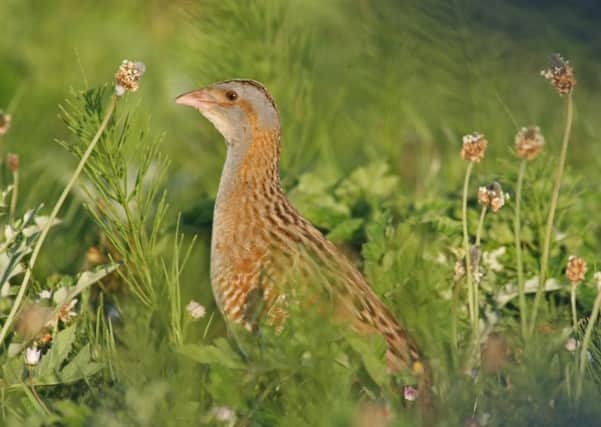Corncrake numbers fall for second year


In total, 1059 calling males were counted during RSPB Scotland’s annual survey. That’s a drop of 3% when compared with 2015, and a decrease of 20% from 2014.
Corncrakes breed in Scotland during spring and summer before migrating back to Africa for winter.
Advertisement
Hide AdAdvertisement
Hide AdStuart Housden, Director of RSPB Scotland, said: “The Scottish corncrake has become emblematic of conservation success in Europe. Effective financial support to crofters and farmers has enabled them to deliver what threatened wildlife needs.
“Following the EU referendum vote we face huge uncertainties regarding the future of agricultural support payments.
“During this period, the fortunes of our corncrakes, and the High Nature Value farming and crofting systems that support them, stand as a key test for the Scottish Government.
“It is a mistake to think of money for agri-environment schemes as an optional extra. It pays for investment and activity which is of vital importance to rural communities, tourism and our wildlife.”
Advertisement
Hide AdAdvertisement
Hide AdJamie Boyle, RSPB Scotland’s site manager for the Uists, reported that corncrake numbers in the Western Isles had remained steady this year compared to 2015, except for a decline in Barra which had affected the overall numbers recorded.
“The numbers reported in Barra declined by 20% which is disappointing as Barra is a very important stronghold. However on the whole our population seems to be stable compared to last year.
“What the figures demonstrate is how important the machair of the Western Isles is for corncrakes and that we must maintain our work in maintaining the traditional crofting system.”
Jamie reported that RSPB Scotland’s Balranald nature reserve in North Uist had bucked the overall trend.
Advertisement
Hide AdAdvertisement
Hide Ad“Balranald recorded its highest count ever of 46 birds compared to just 8 when records began on the reserve in 1974. I am very pleased to report that those areas in North Uist where the RSPB has management agreements with crofters held no fewer than 71 birds which is 70% of the island’s population.
“It shows that by working together we can really benefit our special wildlife which, in turn, helps to attract visitors to the islands and underpin the tourism economy on which so many local jobs depend.”